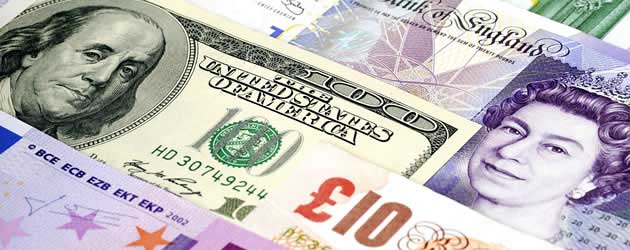
The Pound to US Dollar exchange rate (GBP/USD) dropped to a fresh 1.5-month low of 1.5158 on Friday as rumours of an early wind-down to the Federal Reserve’s expansive quantitative easing programme, plus
a stronger-than-expected US Consumer Confidence survey conspired to send Sterling spiraling lower against the US Dollar.
The ‘Greenback’ began the day on the front foot as Federal Reserve Bank of San Francisco President John Williams said that the US Central Bank was considering slowing down its current rate of monetary loosening over the next few months. US Dollar traders were excited when Williams said:
“It’s clear that the labour market has improved since September…we could reduce somewhat the pace of our securities purchases, perhaps as early as this summer”.
And they were ecstatic when the San Francisco Fed President suggested:
“If all goes as hoped, we could end the purchase programme some time late this year”.
Over the past few years the value of the US Dollar has been undermined by periodic asset purchases from the Federal Reserve. These asset purchases drive the yield lower on US government Treasuries, which in turn drives investors into other sources of profit.
The US Central Bank has previously stated that this period of extremely loose monetary policy will continue until the Unemployment Rate falls below 6.5% or the Consumer Price Index headline inflation rate reaches 3.5%. With Unemployment floating around the 7.5% mark and CPI floundering around the 1.1% level: it does not appear likely that these targets will be hit anytime soon.
However, during the most recent Federal Open Market Committee Minutes report, Chairman Ben Bernanke said that the Fed is “prepared to increase or reduce the pace of its purchases to maintain appropriate policy accommodation”. Bernanke’s sentiments echoed through when James Williams spoke on Friday but this time, crucially, the direction of potential adjustment was clearly shown to be downward – i.e. a slowdown rather than an acceleration of asset purchases. This gave investors the impetus they needed to send GBP/USD lower by around -0.6 cents as the prospect of reduced QE became slightly more concrete.
The Pound declined by a further -0.7 cents during the afternoon as the Thomson Reuters/University of Michigan Consumer Confidence survey printed at its highest level since 2007. The 6-year high figure was largely influenced by plummeting gasoline prices, which shaved off a large portion from the average household’s monthly outgoings and therefore increased the spending power of American consumers. The index rose from 76.4 in April to 83.7 in May, smashing economists’ forecasts of 78.0.
Sterling’s downtrend against the US Dollar could continue this week as UK CPI is expected to fall from 2.8% to 2.6%, which would give the Bank of England a little more room to loosen monetary policy. Any downward revisions to the UK’s first quarter GDP result of 0.3% could also work against the Pound.

Comments are closed.